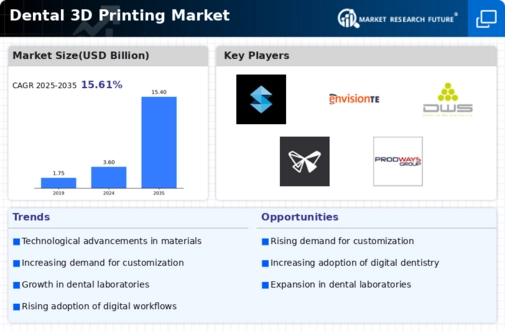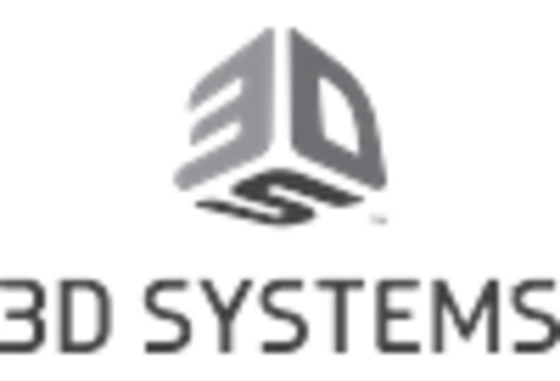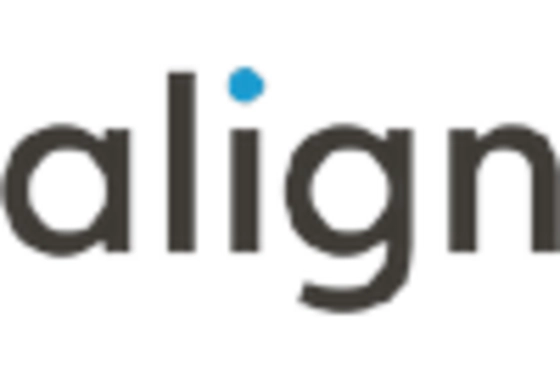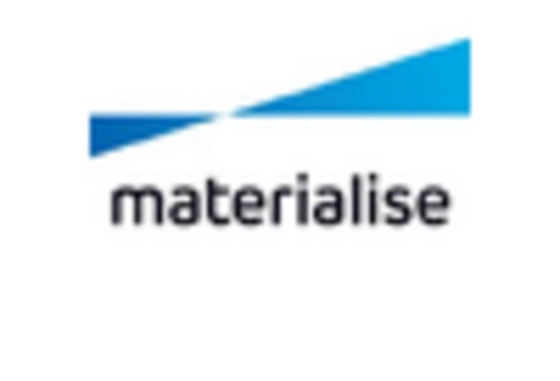-
Report Prologue \r\nChapter
-
Market Introduction \r\n2.1 Definition \r\n2.2 Scope of the Study \r\n2.2.1 Research Objective \r\n2.2.2 Assumptions \r\n2.2.3 Limitations \r\nChapter
-
Research Methodology\r\n3.1 Introduction\r\n3.2 Primary Research \r\n3.3 Secondary Research \r\n3.4 Market Size Estimation\r\nChapter
-
Market Dynamics\r\n4.1 Drivers \r\n4.2 Restraints\r\n4.3 Opportunities \r\n4.4 Challenges\r\n4.5 Macroeconomic Indicators\r\n4.6 Technology Trends & Assessment\r\nChapter
-
Market Factor Analysis\r\n5.1 Porter’s Five Forces Analysis\r\n5.1.1 Bargaining Power of Suppliers \r\n5.1.2 Bargaining Power of Buyers\r\n5.1.3 Threat of New Entrants \r\n5.1.4 Threat of Substitutes \r\n5.1.5 Intensity of Rivalry \r\n5.2 Value Chain Analysis\r\n5.3 Investment Feasibility Analysis \r\n5.4 Pricing Analysis\r\nChapter
-
Global Dental 3D Printing System Market, by Product and Service\r\n6.1 Introduction\r\n6.2 Equipment\r\n
-
Dental 3D Scanners\r\n Market Estimates & Forecast, by Region,2023-2030\r\n Market Estimates & Forecast, by Country,2023-2030\r\n
-
Dental 3D Printers\r\n Market Estimates & Forecast, by Region,2023-2030\r\n Market Estimates & Forecast, by Country,2023-2030\r\n6.3 Materials\r\n
-
Plastic\r\n Market Estimates & Forecast, by Region,2023-2030\r\n Market Estimates & Forecast, by Country,2023-2030\r\n
-
Metal\r\n Market Estimates & Forecast, by Region,2023-2030\r\n Market Estimates & Forecast, by Country,2023-2030\r\n
-
Other Materials\r\n6.4 Services\r\nMarket Estimates & Forecast, by Region,2023-2030\r\n Market Estimates & Forecast, by Country,2023-2030\r\nChapter
-
Global Dental 3D Printing System Market, by Technology\r\n7.1 Introduction\r\n7.2 Vat Photopolymerization\r\n
-
Stereolithography\r\n Market Estimates & Forecast, by Region,2023-2030\r\n Market Estimates & Forecast, by Country,2023-2030\r\n
-
Digital Light Processing\r\n Market Estimates & Forecast, by Region,2023-2030\r\n Market Estimates & Forecast, by Country,2023-2030 \r\n7.3 Fused Deposition Modelling\r\nMarket Estimates & Forecast, by Region,2023-2030\r\nMarket Estimates & Forecast, by Country,2023-2030\r\n7.4 Polyjet Technology\r\n Market Estimates & Forecast, by Region,2023-2030\r\n Market Estimates & Forecast, by Country,2023-2030\r\n7.5 Selective Laser Sintering\r\n Market Estimates & Forecast, by Region,2023-2030\r\n Market Estimates & Forecast, by Country,2023-2030\r\n7.6 Other Technologies\r\nChapter
-
Global Dental 3D Printing System Market, by Application\r\n8.1 Introduction\r\n8.2 Prosthodontics\r\nMarket Estimates & Forecast, by Region,2023-2030\r\nMarket Estimates & Forecast, by Country,2023-2030\r\n8.3 Orthodontics\r\nMarket Estimates & Forecast, by Region,2023-2030\r\nMarket Estimates & Forecast, by Country,2023-2030\r\n8.4 Implantology\r\nMarket Estimates & Forecast, by Region,2023-2030\r\nMarket Estimates & Forecast, by Country,2023-2030\r\nChapter
-
Global Dental 3D Printing System Market, by End-User\r\n9.1 Introduction\r\n9.2 Dental Laboratories\r\nMarket Estimates & Forecast, by Region,2023-2030\r\nMarket Estimates & Forecast, by Country,2023-2030\r\n9.3 Dental Hospitals and Clinics\r\nMarket Estimates & Forecast, by Region,2023-2030\r\nMarket Estimates & Forecast, by Country,2023-2030\r\n9.4 Dental Academic and Research Institutes\r\nMarket Estimates & Forecast, by Region,2023-2030\r\nMarket Estimates & Forecast, by Country,2023-2030\r\nChapter
-
Global Dental 3D Printing System Market, by Region\r\n10.1 Introduction\r\n10.2 Americas\r\n10.2.1 North America\r\n10.2.1.1 US\r\n10.2.1.2 Canada\r\n10.2.2 South America\r\n10.3 Europe\r\n10.3.1 Western Europe\r\n10.3.1.1 Germany\r\n10.3.1.2 France\r\n10.3.1.3 Italy\r\n10.3.1.4 Spain\r\n10.3.1.5 UK\r\n10.3.1.6 Rest of Western Europe\r\n10.3.2 Eastern Europe\r\n10.4 Asia-Pacific\r\n10.4.1 Japan\r\n10.4.2 China\r\n10.4.3 India\r\n10.4.4 Australia\r\n10.4.5 South Korea\r\n10.4.6 Rest of Asia-Pacific\r\n10.5 Middle East & Africa\r\n10.5.1 Middle East\r\n10.5.2 Africa\r\nChapter
-
Company Landscape \r\n11.1 Introduction \r\n11.2 Market Share Analysis \r\n11.3 Key Development & Strategies \r\nChapter
-
Company Profiles \r\n12.1 Stratasys Ltd.\r\n12.1.1 Company Overview \r\n12.1.2 Product Overview \r\n12.1.3 Financials Overview\r\n12.1.4 Key Developments \r\n12.1.5 SWOT Analysis \r\n12.2 3D Systems Inc.\r\n12.2.1 Company Overview \r\n12.2.2 Product Overview \r\n12.2.3 Financial Overview \r\n12.2.4 Key Developments \r\n12.2.5 SWOT Analysis \r\n12.3 Envisiontec, Inc.\r\n12.3.1 Company Overview \r\n12.3.2 Product Overview \r\n12.3.3 Financial Overview\r\n12.3.4 Key Development \r\n12.3.5 SWOT Analysis \r\n12.4 DWS Systems\r\n12.4.1 Company Overview \r\n12.4.2 Product Overview \r\n12.4.3 Financial Overview \r\n12.4.4 Key Development \r\n12.4.5 SWOT Analysis \r\n12.5 Renishaw Plc.\r\n12.5.1 Company Overview \r\n12.5.2 Product Overview \r\n12.5.3 Financial overview \r\n12.5.4 Key Developments\r\n12.5.5 SWOT Analysis \r\n12.6 Formlabs\r\n12.6.1 Company Overview \r\n12.6.2 Product Overview \r\n12.6.3 Financial Overview \r\n12.6.4 Key Developments\r\n12.6.5 SWOT Analysis \r\n12.7 Prodways Group\r\n12.7.1 Overview \r\n12.7.2 Product Overview \r\n12.7.3 Financial Overview \r\n12.7.4 Key Developments \r\n12.7.5 SWOT Analysis \r\n12.8 SLM Solutions Group\r\n12.8.1 Overview \r\n12.8.2 Product Overview\r\n12.8.3 Financials \r\n12.8.4 Key Developments \r\n12.8.5 SWOT Analysis\r\n12.9 Carbon, Inc.\r\n12.9.1 Overview \r\n12.9.2 Product Overview \r\n12.9.3 Financials \r\n12.9.4 Key Developments \r\n12.9.5 SWOT Analysis\r\n12.10 Concept Laser GmbH\r\n12.10.1 Overview \r\n12.10.2 Product Overview \r\n12.10.3 Financials \r\n12.10.4 Key Developments \r\n12.10.5 SWOT Analysis\r\n12.11 EOS GmbH Electro Optical Systems\r\n12.11.1 Overview \r\n12.11.2 Product Overview \r\n12.11.3 Financials \r\n12.11.4 Key Developments \r\n12.11.5 SWOT Analysis\r\n12.12 Rapid Shape GmbH\r\n12.12.1 Overview \r\n12.12.2 Product Overview \r\n12.12.3 Financials \r\n12.12.4 Key Developments \r\n12.12.5 SWOT Analysis\r\n12.13 Asiga\r\n12.13.1 Overview \r\n12.13.2 Product Overview \r\n12.13.3 Financials \r\n12.13.4 Key Developments \r\n12.13.5 SWOT Analysis\r\n12.14 Roland DG\r\n12.14.1 Overview \r\n12.14.2 Product Overview \r\n12.14.3 Financials \r\n12.14.4 Key Developments \r\n12.14.5 SWOT Analysis\r\n \r\nChapter 13 MRFR Conclusion \r\n13.1 Key Findings \r\n13.1.1 From CEO’s Viewpoint \r\n13.1.2 Unmet Needs of the Market \r\n13.2 Key Companies to Watch \r\n13.3 Predictions for the Dental 3D Printing Industry\r\nChapter
-
14.
-
Appendix\r\n \r\nLIST OF TABLES\r\nTable 1 Global Dental 3D Printing System Market Synopsis,2023-2030\r\nTable 2 Global Dental 3D Printing System Market Estimates and Forecast,2023-2030 \r\n (USD Billion)\r\nTable 3 Global Dental 3D Printing System Market, by Region,2023-2030 (USD Billion)\r\nTable 4 Global Dental 3D Printing System Market, by Product and Service, 2018–2023 (USD Billion)\r\nTable 5 Global Dental 3D Printing System Market, by Technology,2023-2030(USD Billion)\r\nTable 6 Global Dental 3D Printing System Market, by Application,2023-2030 (USD Billion)\r\nTable 7 Global Dental 3D Printing System Market, by End-User,2023-2030 (USD Billion)\r\nTable 8 North America: Dental 3D Printing System Market, by Product and Service,2023-2030 (USD \r\n Billion)\r\nTable 9 North America: Dental 3D Printing System Market, by Technology,2023-2030 (USD Billion)\r\nTable 10 North America: Dental 3D Printing System Market, by Application,2023-2030 (USD Billion)\r\nTable 11 North America: Dental 3D Printing System Market, by End-User,2023-2030 (USD Billion)\r\nTable 12 US: Dental 3D Printing System Market, by Product and Service,2023-2030 (USD Billion)\r\nTable 13 US: Dental 3D Printing System Market, by Technology,2023-2030 (USD Billion)\r\nTable 14 US: Dental 3D Printing System Market, by Application,2023-2030 (USD Billion)\r\nTable 15 US: Dental 3D Printing System Market, by End-User,2023-2030 (USD Billion)\r\nTable 16 Canada: Dental 3D Printing System Market, by Product and Service,2023-2030 (USD Billion)\r\nTable 17 Canada: Dental 3D Printing System Market, by Technology,2023-2030 (USD Billion)\r\nTable 18 Canada: Dental 3D Printing System Market, by Application,2023-2030 (USD Billion)\r\nTable 19 Canada: Dental 3D Printing System Market, by End-User,2023-2030 (USD Billion) \r\nTable 20 South America: Dental 3D Printing System Market, by Product and Service,2023-2030 (USD \r\n Billion)\r\nTable 21 South America: Dental 3D Printing System Market, by Technology,2023-2030 (USD Billion)\r\nTable 22 South America: Dental 3D Printing System Market, by Application,2023-2030 (USD Billion) \r\nTable 23 South America: Dental 3D Printing System Market, by End-User,2023-2030 (USD Billion) \r\nTable 24 Europe: Dental 3D Printing System Market, by Product and Service,2023-2030 (USD Billion)\r\nTable 25 Europe: Dental 3D Printing System Market, by Technology,2023-2030 (USD Billion) \r\nTable 26 Europe: Dental 3D Printing Market, by Application,2023-2030 (USD Billion) \r\nTable 27 Europe: Dental 3D Printing Market, by End-User,2023-2030 (USD Billion) \r\nTable 28 Western Europe: Dental 3D Printing Market, by Product and Service,2023-2030 (USD \r\n Billion)\r\nTable 29 Western Europe: Dental 3D Printing Market, by Technology,2023-2030 (USD Billion) \r\nTable 30 Western Europe: Dental 3D Printing Market, by Application,2023-2030 (USD Billion) \r\nTable 31 Western Europe: Dental 3D Printing Market, by End-User,2023-2030 (USD Billion) \r\nTable 32 Eastern Europe: Dental 3D Printing Market, by Product and Service,2023-2030 (USD \r\n Billion)\r\nTable 33 Eastern Europe: Dental 3D Printing Market, by Technology,2023-2030 (USD Billion) \r\nTable 34 Eastern Europe: Dental 3D Printing Market, by Application,2023-2030 (USD Billion) \r\nTable 35 Eastern Europe: Dental 3D Printing Market, by End-User,2023-2030(USD Billion) \r\nTable 36 Asia-Pacific: Dental 3D Printing Market, by Product and Service,2023-2030 (USD \r\n Billion)\r\nTable 37 Asia-Pacific: Dental 3D Printing Market, by Technology,2023-2030 (USD Billion) \r\nTable 38 Asia-Pacific: Dental 3D Printing Market, by Application,2023-2030 (USD Billion) \r\nTable 39 Asia-Pacific: Dental 3D Printing Market, by End-User,2023-2030 (USD Billion) \r\nTable 40 Middle East & Africa: Dental 3D Printing Market, by Product and Service,2023-2030 \r\n (USD Billion) \r\nTable 41 Middle East & Africa: Dental 3D Printing Market, by Technology,2023-2030 (USD Billion) \r\nTable 42 Middle East & Africa: Dental 3D Printing Market, by Application,2023-2030 (USD Billion)\r\nTable 43 Middle East & Africa: Dental 3D Printing Market, by End-User,2023-2030 (USD Billion) \r\n \r\nLIST OF FIGURES\r\nFigure 1 Research Process\r\nFigure 2 Segmentation for Global Dental 3D Printing Market\r\nFigure 3 Segmentation Market Dynamics for Global Dental 3D Printing Market\r\nFigure 4 Global Dental 3D Printing Market Share, by Product and Service, 2022\r\nFigure 5 Global Dental 3D Printing Market Share, by Technology, 2022\r\nFigure 6 Global Dental 3D Printing Market Share, by Application, 2022\r\nFigure 7 Global Dental 3D Printing Market Share, by End-User, 2022\r\nFigure 8 Global Dental 3D Printing Market Share, by Region, 2022\r\nFigure 9 North America: Dental 3D Printing Market Share, by Country, 2022\r\nFigure 10 Europe: Dental 3D Printing Market Share, by Country, 2022\r\nFigure 11 Asia-Pacific: Dental 3D Printing Market Share, by Country, 2022\r\nFigure 12 Middle East & Africa: Dental 3D Printing Market Share, by Country, 2022\r\nFigure 13 Global Dental 3D Printing Market: Company Share Analysis, 2022 (%)\r\nFigure 14 Stratasys Ltd.: Key Financials\r\nFigure 15 Stratasys Ltd.: Segmental Revenue\r\nFigure 16 Stratasys Ltd.: Geographical Revenue\r\nFigure 17 3D Systems Inc.: Key Financials\r\nFigure 18 3D Systems Inc.: Segmental Revenue\r\nFigure 19 3D Systems Inc.: Geographical Revenue\r\nFigure 20 Envisiontec, Inc.: Key Financials\r\nFigure 21 Envisiontec, Inc.: Segmental Revenue\r\nFigure 22 Envisiontec, Inc.: Geographical Revenue\r\nFigure 23 DWS Systems : Key Financials\r\nFigure 24 DWS Systems: Segmental Revenue\r\nFigure 25 DWS Systems : Geographical Revenue\r\nFigure 26 Renishaw Plc.: Key Financials\r\nFigure 27 Renishaw Plc.: Segmental Revenue\r\nFigure 28 Renishaw Plc.. Geographical Revenue\r\nFigure 29 Formlabs: Key Financials\r\nFigure 30 Formlabs: Segmental Revenue\r\nFigure 31 Formlabs: Geographical Revenue\r\nFigure 32 Prodways Group: Key Financials\r\nFigure 33 Prodways Group: Segmental Revenue\r\nFigure 34 Prodways Group: Geographical Revenue\r\nFigure 35 SLM Solutions Group: Key Financials\r\nFigure 36 SLM Solutions Group: Segmental Revenue\r\nFigure 37 SLM Solutions Group: Geographical Revenue\r\nFigure 38 Carbon, Inc.: Key Financials\r\nFigure 39 Carbon, Inc.: Segmental Revenue\r\nFigure 40 Carbon, Inc.: Geographical Revenue \r\nFigure 41 Concept Laser GmbH: Key Financials\r\nFigure 42 Concept Laser GmbH: Segmental Revenue\r\nFigure 43 Concept Laser GmbH: Geographical Revenue\r\nFigure 44 EOS GmbH Electro Optical Systems: Key Financials\r\nFigure 45 EOS GmbH Electro Optical Systems: Segmental Revenue\r\nFigure 46 EOS GmbH Electro Optical Systems: Geographical Revenue \r\nFigure 47 Rapid Shape GmbH: Key Financials\r\nFigure 48 Rapid Shape GmbH: Segmental Revenue\r\nFigure 49 Rapid Shape GmbH: Geographical Revenue \r\nFigure 50 Asiga: Key Financials\r\nFigure 51 Asiga: Segmental Revenue\r\nFigure 52 Asiga: Geographical Revenue \r\nFigure 53 Roland DG: Key Financials\r\nFigure 54 Roland DG: Segmental Revenue\r\nFigure 55 Roland DG: Geographical Revenue









Leave a Comment